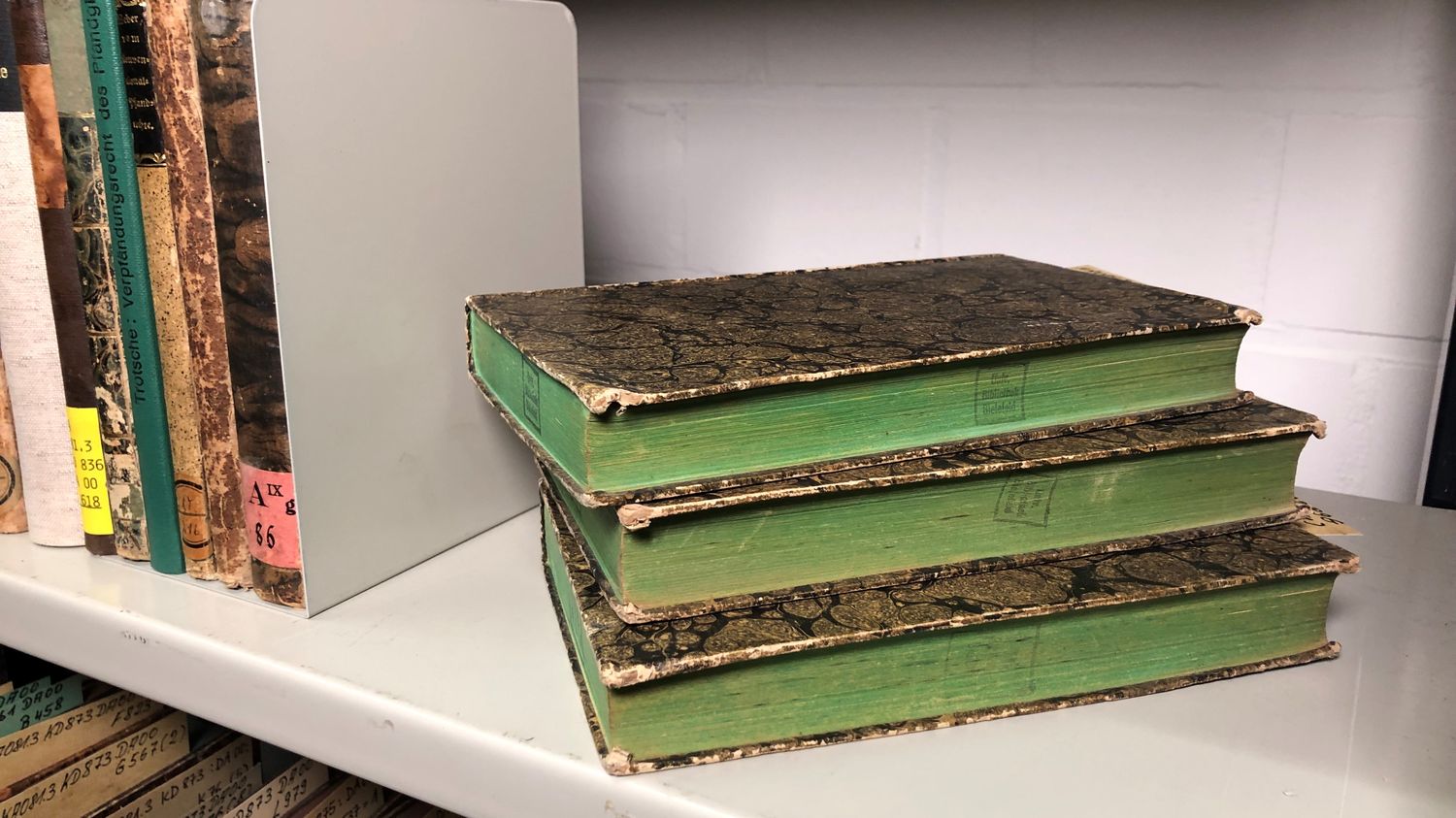Tens of thousands of books would be affected: the bright green pigment was widely used for the manufacture of books in the 19th century.

Published
Update
Reading time: 2 mins

Books contaminated with arsenic… The story is reminiscent of the famous film and novel: The Name of the Rose. This is happening in Germany, in several university libraries and tens of thousands of works would be affected. In question: a green pigment, very fashionable in the 19th century, and used for the manufacture of books.
Several establishments have begun to isolate suspicious volumes for examination. The University library in Bielefeld, a city of 330,000 in northwest Germany, is preparing to quarantine 60,000 books.
With their bright green color, potentially contaminated books are easy to spot. Not all of them have yet been removed from the library shelves. In one of the aisles, director Barbara Knorn points to a book devoted to German history: “This book, for example, has a characteristic green color. Sometimes it is the cover that is green or the spine of the book. The danger for health is when we handle the books, when the arsenic is placed on the hands and then brought to the mouth.”
“A wonderfully intense and brilliant dye”
60,000 structures will have to be tested to assess the presence of arsenic. These are books published in the 19th century. Back when a dye – called Schweinfurt Green – was widely used. Reinhardt Altenhöner, member of the board of directors of the German Library Association, estimates that 5 to 7% of books are contaminated: “It was a wonderfully intense and brilliant dye. Making the books this way made them attractive. It is said that Goethe was very fond of this green. It is the arsenic which gives this particular color. And the risk is that it triggers discomfort, vomiting or diarrhea up to cancer, even if it is very unlikely.”

The 24,000 students were alerted to the risks via internal messaging. This doesn’t stop Paul, when we meet him leaving the library, from being a little worried: “It’s weird to think that arsenic is everywhere here. At the moment, I come to study here 5 or 6 days a week… It’s a little scary to be exposed to such toxic substances.”
Library management estimates that 6,000 books in its collection could be contaminated. Once identified, they are removed from the shelves, explains Birgit Heuer, who works in the loan department: “Students have been asked to return the books they have borrowed. We take them with gloves and then pack them in envelopes or boxes until they are examined.” Analyzes will begin in the coming days. Works contaminated with arsenic will be put aside and then digitized to remain accessible to students.
